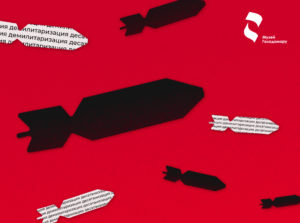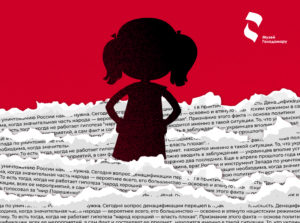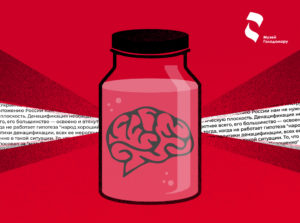Propaganda that kills
Totalitarian regimes that commit genocide often seek justifications for destroying human groups and launch aggressive propaganda for this. We are currently witnessing a maelstrom of anti-Ukrainian and generally anti-humane rhetoric with undisguised calls for genocide in the modern Russian Federation. Hate speech, construction of the image of the enemy, and dehumanization of Ukrainians are far from an exhaustive list of means used by propagandists and politicians of the terrorist country.
Modern Russian propaganda is a phenomenon deeply rooted in the traditions of communist agitprop. As 90 years ago as it is now, the totalitarian machine, committing genocide and war crimes, tries to justify them primarily for the internal consumer – its citizens. Russia consistently hides and falsifies information about the crimes of the communist regime. In particular, in 2005, during his annual address to the federal assembly, Putin called the collapse of the Soviet Union the greatest geopolitical catastrophe of the 20th century. Putin’s Russia actively uses still Soviet narratives about “Ukrainian nationalism” and “Banderivtsi”, as well as newly created theses about “denazification” and “demilitarization”. This ideological mixture of the modern Russian Federation, which is based on imperial chauvinism, nostalgia for the “greatness” of the USSR, and the modern narrative of confrontation with the West, is often called rashism/putinism.
Putinism/rashism, like any other ideology, has its symbols. If, until recently in Russia, only the state coat of arms and flag, as well as the St. George ribbon, were used, then with the beginning of the “special military operation,” the public space was filled with the letters Z and V, the meaning of which, however, neither high-ranking officials nor Russians, who otherwise, they participate in propaganda campaigns using this symbol. Aggressive propaganda broadcast by state media in the Russian Federation encourages Russian society to support the regime’s actions. As a result, the Russian army commits war crimes on the territory of sovereign and independent Ukraine while having the Russians’ trust and support.
That is why it is crucial to show the vertical of genocide propaganda — from the Ukrainian-phobic theses of the highest officials to the often absurd and primitive “self-activity” on the ground, which manifests itself in flash mobs, actions, etc. A particular danger is the involvement of children and youth in propaganda, in particular through the activities of militarized organizations (for example, Yunarmiya).
In the “Propaganda that Kills” project, we analyze the regularities of the propaganda influence of the Putin regime on internal and external consumers. Using specific examples, we debunk typical rashist narratives and demonstrate their real tasks.



